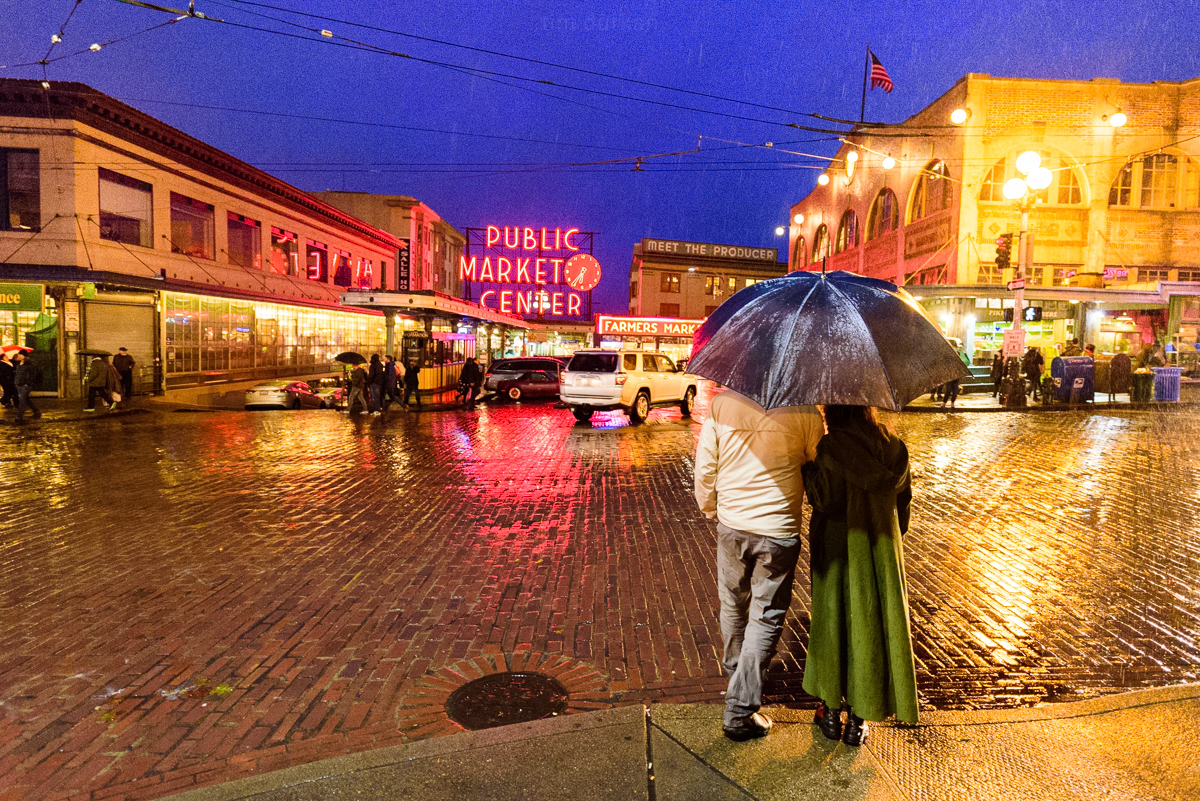
What’s one of the first things that comes to mind when you think of Seattle? If you said, “rain” you’re not alone. But how about “RainWise”? This summer, RainWise, a program partnership between Seattle Public Utilities and King County, celebrated a milestone: 1,000 RainWise participants! You can learn more about RainWise below, but first, a bit of background info:
Stormwater runoff and combined sewer overflows
Seattle is well known for being a pretty rainy place—in an average year, 36 inches of rain falls on our rooftops, streets, sidewalks, and parking lots. Unfortunately, these surfaces are impermeable, meaning they don’t allow rain to pass through them and soak into the ground. Instead, fallen rain flows over these hard surfaces until it reaches our storm and sewer system or local bodies of water like Lake Washington and Puget Sound. Along the way, this rain becomes polluted with things like oil and grease, fertilizers, pesticides, and other toxic chemicals. We call this stormwater runoff.
Stormwater runoff flowing into our local waters sounds bad enough, but add sewage to the mix, and the problem gets even bigger. In some parts of Seattle, our sewer and storm drain systems are combined. If rain falls hard enough, the amount of water entering our underground pipes becomes more than these pipes can handle. The toxic mixture of stormwater runoff and sewage ends up overflowing—untreated—into our lakes, streams, and Puget Sound, causing a range of public health and environmental concerns. This is called a combined sewer overflow or CSO. (You can see combined sewer overflow locations and status in real time on King County’s website.)
What are we doing to address these problems?
Seattle Public Utilities (SPU) and King County have joined forces to target these toxic overflows using three different approaches: fix what can be fixed; increase overflow storage and treatment capacity; and implement Green Stormwater Infrastructure (GSI). GSI includes rain gardens, cisterns, tree boxes and other natural solutions that keep rainwater out of our pipes when they are at capacity and allow rain to soak into the ground where it lands.
GSI and You
 GSI systems can reduce combined sewer overflows and prevent a lot of rain from becoming polluted stormwater runoff – but not without your help! More than 60% of our city is covered with impermeable surfaces, and more than half of those hard surfaces are on private property. That’s why SPU and King County created the RainWise rebate program.
GSI systems can reduce combined sewer overflows and prevent a lot of rain from becoming polluted stormwater runoff – but not without your help! More than 60% of our city is covered with impermeable surfaces, and more than half of those hard surfaces are on private property. That’s why SPU and King County created the RainWise rebate program.
RainWise gives homeowners an opportunity to manage stormwater at home. By installing rain gardens and cisterns (really big rain barrels) private property owners can capture most or all of the rain that falls on their rooftop. And they can receive a rebate for participating in the program—the average rebate is over $4000!
Since 2011, over 1,000 Seattle residents have installed rain gardens and cisterns to help reduce CSOs and pollution of local waterways—an average of 16.5 million gallons of stormwater is captured each year. (Check out our RainWise by the Numbers infographic below for more inspiring stats.)

RainWise by the numbers.
Want to install your own rain garden?
Find out if your home is eligible for a RainWise rebate. If you aren’t in an eligible area (eligibility is based on areas that contribute most to combined sewer overflows), maybe you know a friend or business that is. Help spread the word!